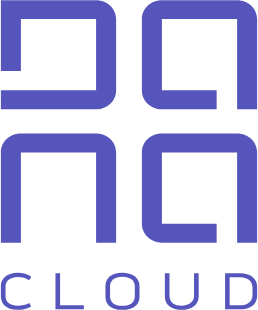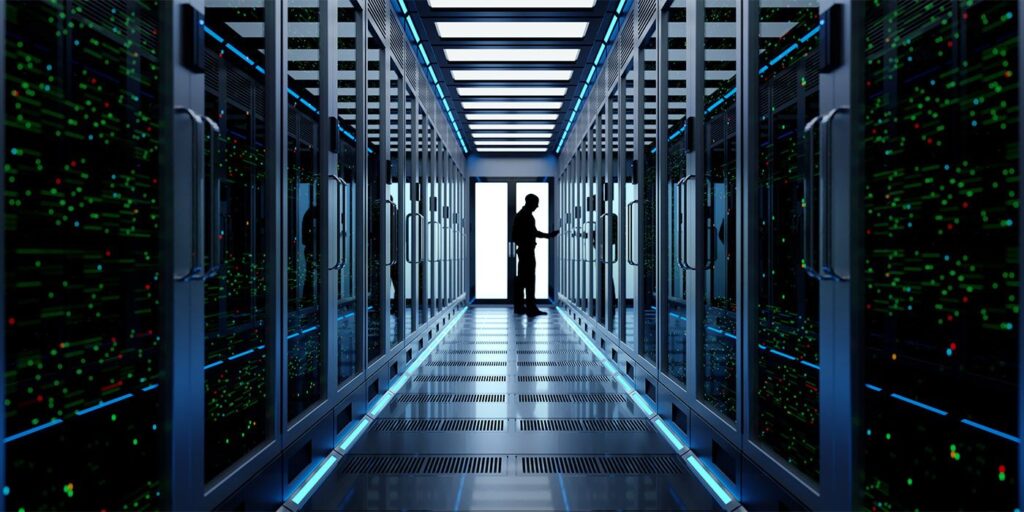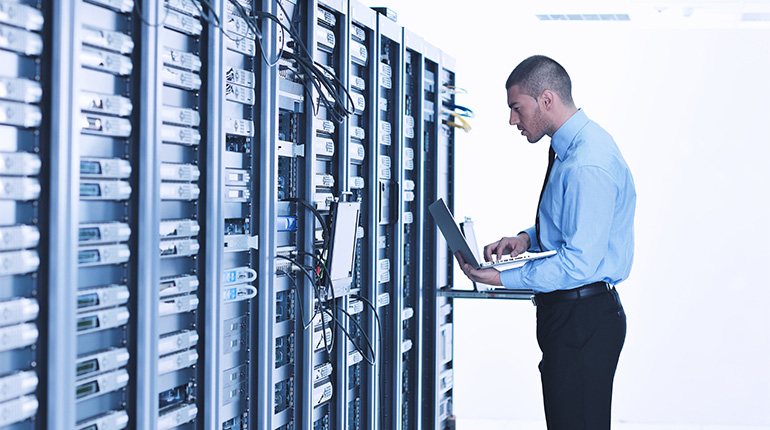Imagine this scenario: A company faces frequent server downtimes, causing delays and frustrated customers. Upon investigation, it’s revealed that their data center infrastructure lacked proper monitoring and optimization tools. This is where Data Center Infrastructure Management (DCIM) becomes indispensable.
DCIM bridges the gap between IT and facility management, providing organizations with tools to monitor, manage, and optimize their data center infrastructure effectively. As businesses grow increasingly data-driven, ensuring seamless operations within a data center is critical. DCIM software allows for better resource allocation, reduced downtime, and improved energy efficiency, which directly impacts operational costs and environmental sustainability.
In today’s digital landscape, effective infrastructure management is no longer a luxury—it’s a necessity. Whether it’s optimizing power usage or tracking asset performance, DCIM ensures that a data center remains the backbone of uninterrupted business operations. Let’s explore its components, benefits, and real-world applications.
| Aspect | Description | Key Components/Technologies | Importance/Benefits |
|---|---|---|---|
| What is DCIM? | DCIM is a suite of tools and processes that bridge the gap between IT systems and facility management in a data center, providing real-time monitoring, data visualization, and analytics. | Monitoring tools, data visualization, analytics platforms, IT & facility integration. | Ensures efficient operations, better resource allocation, reduced downtime, and improved energy efficiency. |
| Benefits of DCIM | DCIM improves the efficiency, reliability, and scalability of data center operations through enhanced monitoring, resource optimization, and energy management. | Resource Utilization: Power, cooling, and space optimization. Performance Monitoring: Real-time tracking of system performance. Energy Efficiency: Analytics for reducing energy consumption. Scalability: Capacity planning tools. |
Improved resource efficiency, reduced operational costs, enhanced scalability, streamlined operations, and better security/compliance. |
| Components of DCIM | DCIM comprises several essential components designed to manage and optimize data center operations, providing insights into both physical and IT infrastructure. | Power Monitoring & Management: Tracks energy consumption. Environmental Monitoring: Measures temperature, humidity, airflow, and cooling efficiency. Asset Management: Tracks data center assets. Capacity Planning: Forecasts future needs. Real-Time Data Analytics: Provides actionable insights. Integration Capabilities: Unifies IT and facility management systems. |
These components help optimize performance, predict issues, reduce energy consumption, and improve operational decisions. |
| Challenges of DCIM | Implementing DCIM comes with several challenges such as integration complexity, high initial costs, learning curves, scalability issues, and managing large data sets. | Integration Complexity: Difficulty in merging DCIM tools with existing IT systems. High Initial Costs: Upfront investment in DCIM tools and infrastructure. Steep Learning Curve: Requires staff training. Scalability Issues: Tools may struggle to grow with data centers. Data Overload: Managing vast amounts of real-time data. |
Overcoming these challenges is key to effective implementation, scalability, and data management. |
| Energy Efficiency | DCIM tools optimize energy consumption by identifying inefficiencies and allowing real-time adjustments, such as optimizing power distribution and cooling. | Energy Monitoring: Identifies energy spikes or inefficiencies. Optimization Algorithms: Adjusts cooling and power systems dynamically. |
Significantly reduces energy costs and improves sustainability by maintaining performance with minimal energy usage. |
| Scalability and Capacity Planning | DCIM tools help forecast future resource needs, ensuring data centers can scale smoothly by predicting demands for power, cooling, and space. | Capacity Planning: Tools that analyze current capacity and forecast future needs. Scalable Resources: Allows for resource allocation adjustments as demand grows. |
Enables smooth growth, avoiding bottlenecks and optimizing resource use as the data center expands. |
| Security & Compliance | DCIM helps track and secure physical and digital infrastructure, ensuring compliance with industry regulations (e.g., GDPR, HIPAA) and safeguarding sensitive data. | Compliance Tracking: Monitors and logs compliance requirements. Access Control: Ensures secure access to physical and virtual infrastructure. |
Helps meet regulatory standards and protect sensitive data, ensuring both security and legal compliance. |
| Integration with Existing Systems | Modern DCIM solutions are designed to integrate with existing IT management and facility systems to provide a seamless, unified view. | System Integration: Connects with existing IT, building management, and operational tools. | Enhances overall functionality without overhauling current infrastructure, improving workflow integration. |
| Industries That Benefit from DCIM | Industries that rely on high-performance IT environments benefit most from DCIM, especially those in cloud computing, finance, healthcare, and telecommunications. | Cloud Computing, Finance, Healthcare, Telecommunications: All these sectors demand high uptime, resource optimization, and regulatory compliance. | DCIM ensures reliability, uptime, regulatory compliance, and operational efficiency in these critical sectors. |
What is data center infrastructure management?
Data Center Infrastructure Management (DCIM) is a suite of tools and processes that bridge the gap between IT systems and facility management in a data center. At its core, DCIM provides real-time monitoring, data visualization, and analytics to help manage critical infrastructure components, including power distribution, cooling systems, and IT equipment.
DCIM tools are essential for optimizing performance, minimizing energy consumption, and ensuring reliable operations. For example, they enable administrators to track server health, monitor power usage effectiveness (PUE), and predict system failures through data-driven insights.
Beyond monitoring, DCIM facilitates automation and enhances decision-making by providing a centralized view of the data center’s environment. It supports scalability by efficiently managing resources and improving capacity planning.
As data centers grow more complex, DCIM solutions are vital for maintaining efficiency and ensuring that infrastructure can meet the demands of modern businesses and emerging technologies like AI and IoT.
Related article: Second-Generation DCIM
What are the benefits of DCIM?
Data Center Infrastructure Management (DCIM) offers numerous benefits that enhance the efficiency, reliability, and scalability of data center operations. Here are the key advantages:
- Improved Resource Utilization: DCIM tools help monitor and optimize power, cooling, and space usage, ensuring resources are allocated efficiently and reducing waste.
- Enhanced Performance Monitoring: Real-time tracking of infrastructure performance allows for early detection of potential issues, minimizing downtime and ensuring system reliability.
- Streamlined Operations: By integrating IT and facility management, DCIM creates a centralized view of the data center, simplifying workflows and enhancing collaboration between teams.
- Energy Efficiency: Advanced analytics in DCIM solutions identify inefficiencies, such as underutilized servers or overworked cooling systems, helping to reduce energy consumption and operational costs.
- Scalability and Capacity Planning: DCIM supports data centers in scaling operations smoothly by forecasting future needs, whether related to power, storage, or cooling capacity.
- Enhanced Security and Compliance: DCIM solutions track physical and digital infrastructure, ensuring compliance with industry regulations and safeguarding sensitive data.
For example, a data center adopting DCIM can predict energy spikes during peak loads and optimize cooling systems accordingly, maintaining operations without unnecessary costs or risk. This combination of insights and control makes DCIM indispensable in modern data centers.
What are the Components of DCIM?
A Data center infrastructure solution comprises several essential components designed to optimize and manage it’s operations effectively. These components collectively provide comprehensive insights into the physical and IT infrastructure.
Key Components of DCIM:
-
Power Monitoring and Management:
- Tracks energy consumption and power distribution across servers and devices.
- Helps identify inefficiencies and optimize energy use.
-
Environmental Monitoring:
- Sensors measure temperature, humidity, airflow, and cooling efficiency.
- Ensures an optimal operating environment to prevent equipment damage or overheating.
-
Asset Management:
- Provides detailed tracking of data center assets, including servers, storage units, and network devices.
- Streamlines inventory management and improves resource allocation.
-
Capacity Planning:
- Tools to forecast future needs for power, cooling, and space.
- Facilitates scalability by identifying bottlenecks before they occur.
-
Real-Time Data Analytics:
- Offers insights through dashboards for performance, energy efficiency, and operational metrics.
- Aids in data-driven decision-making.
-
Integration Capabilities:
- Connects with existing IT management tools to unify data and workflows.
- Enhances collaboration between IT and facilities teams.
These components ensure that DCIM not only manages existing resources effectively but also supports future growth and sustainability in data center operations.
Some challenges of DCIM
Implementing Data Center Infrastructure Management (DCIM) comes with several challenges that organizations must navigate to ensure its success.
-
Integration Complexity:
- Integrating DCIM tools with existing systems, such as IT management or facility software, can be technically demanding.
-
High Initial Costs:
- The implementation of DCIM tools and sensors can require significant upfront investment, particularly for large-scale data centers.
-
Steep Learning Curve:
- Training staff to utilize DCIM effectively takes time and effort, especially for teams unfamiliar with advanced analytics.
-
Scalability Issues:
- Some DCIM tools struggle to scale effectively as data centers expand, requiring careful vendor selection.
-
Data Overload:
- Managing and interpreting vast amounts of real-time data generated by DCIM systems can be overwhelming without proper planning.
Addressing these challenges requires strategic planning, vendor collaboration, and investment in skilled personnel.
Final Thoughts
A robust data center infrastructure solution is critical for optimizing operations, enhancing scalability, and ensuring energy efficiency. By leveraging advanced data center infrastructure management tools, businesses can overcome challenges, improve visibility, and future-proof their digital environments for evolving demands. A well-managed infrastructure in Danacloud paves the way for sustainable and resilient operations.
FAQ
How does DCIM improve energy efficiency?
DCIM tools monitor energy usage across devices, identifying inefficiencies and enabling real-time adjustments. By optimizing power distribution and cooling systems, businesses can significantly reduce energy costs while maintaining performance and ensuring sustainable operations.
Can DCIM be integrated with existing systems?
Yes, modern DCIM solutions are designed to integrate with existing IT and facility management systems, allowing seamless data sharing and enhanced functionality without overhauling current infrastructure.
What industries benefit the most from DCIM?
Industries reliant on high-performance IT environments, such as cloud computing, finance, healthcare, and telecommunications, benefit greatly from DCIM. These tools ensure uptime, optimize resources, and maintain regulatory compliance in demanding sectors.


